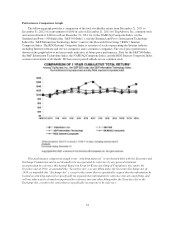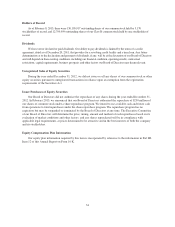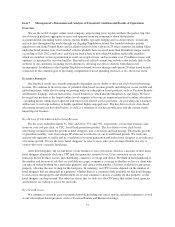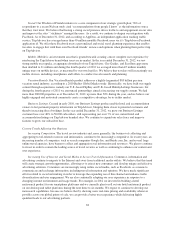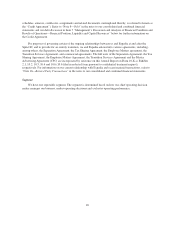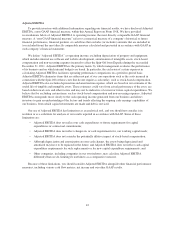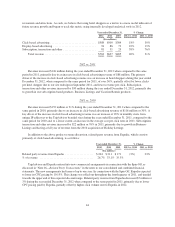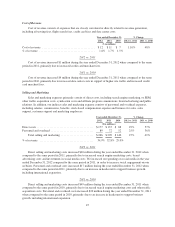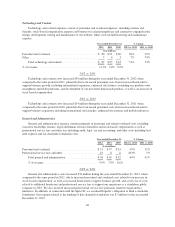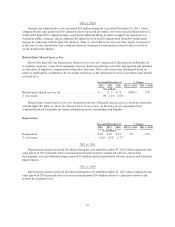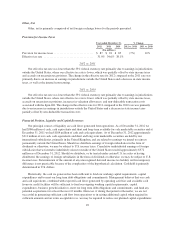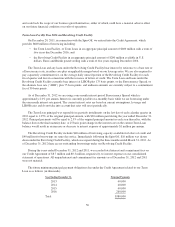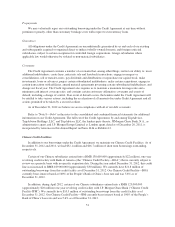TripAdvisor 2012 Annual Report Download - page 52
Download and view the complete annual report
Please find page 52 of the 2012 TripAdvisor annual report below. You can navigate through the pages in the report by either clicking on the pages listed below, or by using the keyword search tool below to find specific information within the annual report.Adjusted EBITDA
To provide investors with additional information regarding our financial results, we have disclosed Adjusted
EBITDA, a non-GAAP financial measure, within this Annual Report on Form 10-K. We have provided
reconciliations below of Adjusted EBITDA to operating income, the most directly comparable GAAP financial
measure. A “non-GAAP financial measure” refers to a numerical measure of a company’s historical or future
financial performance, financial position, or cash flows that excludes (or includes) amounts that are included in
(or excluded from) the most directly comparable measure calculated and presented in accordance with GAAP in
such company’s financial statements.
We define “Adjusted EBITDA” as operating income, excluding depreciation of property and equipment,
which includes internal use software and website development, amortization of intangible assets, stock-based
compensation and non-recurring expenses incurred to effect the Spin-Off from Expedia during the year ended
December 31, 2011. Adjusted EBITDA is the primary metric by which management evaluates the performance
of its business and on which internal budgets are based. In particular, the exclusion of certain expenses in
calculating Adjusted EBITDA facilitates operating performance comparisons on a period-to-period basis.
Adjusted EBITDA eliminates items that are either not part of our core operations such as the costs incurred in
connection with the Spin-Off or those costs that do not require a cash outlay, such as stock-based compensation.
Adjusted EBITDA also excludes depreciation and amortization expense, which are based on our estimates of the
useful life of tangible and intangible assets. These estimates could vary from actual performance of the asset, are
based on historical costs and other factors and may not be indicative of current or future capital expenditures. We
believe that by excluding certain items, such as stock-based compensation and non-recurring expenses, Adjusted
EBITDA corresponds more closely to the cash operating income generated from our business and allows
investors to gain an understanding of the factors and trends affecting the ongoing cash earnings capabilities of
our business, from which capital investments are made and debt is serviced.
Our use of Adjusted EBITDA has limitations as an analytical tool, and you should not consider it in
isolation or as a substitute for analysis of our results reported in accordance with GAAP. Some of these
limitations are:
• Adjusted EBITDA does not reflect our cash expenditures or future requirements for capital
expenditures or contractual commitments;
• Adjusted EBITDA does not reflect changes in, or cash requirements for, our working capital needs;
• Adjusted EBITDA does not consider the potentially dilutive impact of stock-based compensation;
• Although depreciation and amortization are non-cash charges, the assets being depreciated and
amortized may have to be replaced in the future, and Adjusted EBITDA does not reflect cash capital
expenditure requirements for such replacements or for new capital expenditure requirements; and
• Other companies, including companies in our own industry, may calculate Adjusted EBITDA
differently than we do, limiting its usefulness as a comparative measure.
Because of these limitations, you should consider Adjusted EBITDA alongside other financial performance
measures, including various cash flow metrics, net income and our other GAAP results.
42



